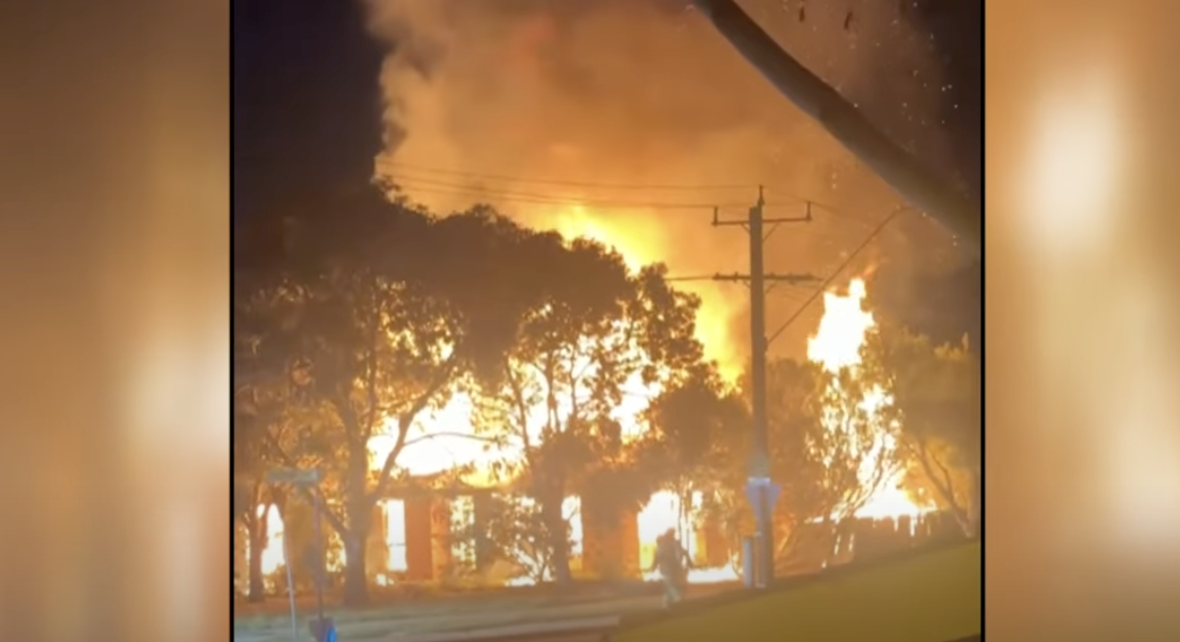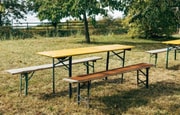
When Melbourne residents woke on a recent morning, three families in different suburbs discovered their neighbourhoods had been shaken by suspicious house fires.
The timing, circumstances, and targeting of unoccupied homes has highlighted growing security concerns around vacant properties across the city.
Emergency services rushed to Craigieburn, Glen Waverley, and Noble Park before 5am as flames engulfed three separate homes. All properties shared one troubling characteristic: they were empty at the time of the fires.
The morning that shook three suburbs
In Craigieburn, neighbours watched in shock as an unoccupied house burned to the ground. Local residents described the blaze as 'intense' and 'terrifying,' with flames visible from streets away.
Fire Rescue Victoria's Paul Buck told reporters that authorities immediately suspected foul play. 'The house was unoccupied, and there doesn't appear to be much furniture in there,' he explained. 'So for a fire to be burning as hard as it was at this point suggests there may have been some other interaction with the building.'
The targeting becomes more concerning when you consider that Melbourne currently has nearly 100,000 vacant homes—that's one in every 20 properties sitting empty.
Neighbours revealed the Craigieburn property was known to be used by squatters, adding another layer of complexity to the investigation.
CCTV captures brazen entry
The most disturbing incident unfolded in Noble Park, where CCTV footage captured a man walking into the yard of an unoccupied home, entering through a window, and running out the front door with a dog just minutes later. Shortly after, flames engulfed the building.
Around the same time in Glen Waverley, residents reported seeing a car driving away from another home as it caught fire. 'Neighbouring properties were under threat, so firefighters had to work extremely hard to protect those properties,' Buck noted.
All three homes were completely gutted. While police don't currently believe the fires are connected, investigators are combing through what remains to determine the causes.
'The house was unoccupied, and there doesn't appear to be much furniture in there. So for a fire to be burning as hard as it was suggests there may have been some other interaction with the building'
Melbourne's vacant property vulnerability
These incidents occur against the backdrop of Melbourne's mounting vacant property crisis, with recent research revealing almost 100,000 dwellings sitting empty or barely used in metropolitan Melbourne as of 2023.
The problem has worsened significantly, with long-term vacancy rates jumping more than 50 per cent through 2021 and remaining elevated. Researchers found that 'for every five homes built between 2019 and 2021, two more homes were added to the vacant stock and left unoccupied for a year or more'.
Empty properties present attractive targets for criminal activity, from squatting and drug operations to deliberate arson. The lack of regular occupancy means suspicious activity can go unnoticed for extended periods.
Source: 9 News Australia / Youtube.
New tax changes affecting property owners
From January 1, 2025, Victoria’s Vacant Residential Land Tax (VRLT) will expand to cover the entire state. It applies to residential properties that were unoccupied for more than six months in the preceding calendar year, regardless of where they are located.
The VRLT is now progressive, starting at 1 per cent of a property’s capital-improved value for the first year of vacancy, increasing to 2 per cent if it remains vacant for a second consecutive year, and 3 per cent for the third and subsequent years.
This creates financial pressure on owners to either occupy or rent out their properties, but it may also inadvertently increase security risks as more owners seek tenants quickly or leave properties empty while avoiding the tax.
Understanding Victoria's vacant property tax
Properties must be rented for at least six months to avoid VRLT liability. An apartment not used as a principal residence needs rental occupancy for this minimum period.
Protecting vacant properties
Whether you own an investment property between tenants, a holiday home, or are managing an estate, several security measures can help protect vacant properties:
Immediate steps:
- Install visible security cameras and alarm systems
- Arrange regular property inspections (weekly minimum)
- Maintain the property's occupied appearance with lawn care and mail collection
- Secure all entry points with quality deadlocks
Ongoing protection:
- Consider hiring a property management company for regular oversight
- Install timer lights to simulate occupancy
- Remove or secure any valuable fixtures or appliances
- Notify local police of extended vacancy periods
Victoria's State Revenue Office encourages residents to report suspected vacant properties through their website tip-off system, which helps authorities track unoccupied homes that should be contributing to the rental market.
Neighbourhood implications
These fires demonstrate how vacant properties can affect entire streets. Neighbouring homes faced immediate fire threats, and residents experienced trauma from witnessing the blazes.
The scale of Melbourne's vacancy problem is staggering—current vacant housing 'surpasses two and a half years' worth of new dwelling construction' and could house everyone on Victoria's public housing waitlist twice over.
Vacant property security essentials
- Regular inspections (weekly minimum)
- Visible security systems (cameras and alarms)
- Maintain occupied appearance (lights, lawn care)
- Quality locks on all entry points
- Local police notification of extended vacancy
- Consider professional property management
Community vigilance becomes crucial when properties sit empty. Residents who notice unusual activity around vacant homes—whether vehicles at odd hours, people entering through windows, or other suspicious behaviour—should report it to police.
Insurance considerations
Vacant properties often require specialised insurance coverage, as standard home insurance may not cover unoccupied buildings. Property owners should review their policies to ensure adequate protection, particularly given the increased fire risk these incidents highlight.
The financial implications extend beyond potential fire damage. Properties damaged by arson or other criminal activity may face higher insurance premiums, reduced market values, and costly security upgrades.
What This Means For You
These three suspicious fires serve as a stark reminder that vacant properties require active protection strategies. With Melbourne's massive inventory of empty homes, property owners cannot afford to assume their unoccupied buildings will remain secure without proper precautions.
The investigation continues into these particular fires, but the broader message is clear: vacant properties need vigilant oversight, adequate insurance, and community awareness to prevent becoming targets for criminal activity.
What security measures do you think work best for protecting vacant properties? Have you noticed concerning activity around empty homes in your neighbourhood? Share your experiences and tips in the comments below—your insights could help fellow readers protect their properties and communities.
Primary Source
https://www.9news.com.au/national/m...rk-fires/16998b73-e8b9-4555-9dc9-80eaa29bfc9e
Local News: Melbourne’s rising “ghost properties” | CBD News
Cited text: The report revealed that more than 97,000 homes across Metropolitan Melbourne, or one in 20, were currently vacant, and that around 30,000 people in V...
Excerpt: The targeting becomes more concerning when you consider that Melbourne currently has nearly 100,000 vacant homes—that's one in every 20 properties sitting empty
https://www.cbdnews.com.au/melbournes-rising-ghost-properties/
Report: 100,000 vacant homes in Melbourne | Prosper Australia
Cited text: Underused housing has increased significantly: with the inclusion of dwellings that recorded less than one-quarter of the average single-person househ...
Excerpt: The targeting becomes more concerning when you consider that Melbourne currently has nearly 100,000 vacant homes—that's one in every 20 properties sitting empty
https://www.prosper.org.au/2024/07/report-100000-vacant-homes-in-melbourne/
Report: 100,000 vacant homes in Melbourne | Prosper Australia
Cited text: Prosper Australia’s 11th Speculative Vacancy report, examining water meter data, today revealed startling statistics on the extent of unoccupied housi...
Excerpt: These incidents occur against the backdrop of Melbourne's mounting vacant property crisis, with recent research revealing almost 100,000 dwellings sitting empty or barely used in metropolitan Melbourne as of 2023
https://www.prosper.org.au/2024/07/report-100000-vacant-homes-in-melbourne/
Report: 100,000 vacant homes in Melbourne | Prosper Australia
Cited text: Prosper’s study looked into unoccupied housing in Melbourne from 2019 to 2023, and found that long-term vacancy rates jumped more than 50 per cent through to ...
Excerpt: The problem has worsened significantly, with long-term vacancy rates jumping more than 50 per cent through 2021 and remaining elevated.
https://www.prosper.org.au/2024/07/report-100000-vacant-homes-in-melbourne/
Making More Homes Available For Victorians | Premier
Cited text: The Allan Labor Government is cracking down on vacant properties across Melbourne to make more homes available to Victorians who need them.Hundreds of...
Excerpt: From January 1, 2025, Victoria's vacant residential land tax (VRLT) expanded statewide, applying to any home vacant for more than six months in the preceding calendar year
https://www.premier.vic.gov.au/making-more-homes-available-victorians
Making More Homes Available For Victorians | Premier
Cited text: From 1 January 2025, VRLT will apply to homes across all of Victoria if they are vacant for more than six months in the preceding calendar year.
Excerpt: From January 1, 2025, Victoria's vacant residential land tax (VRLT) expanded statewide, applying to any home vacant for more than six months in the preceding calendar year
https://www.premier.vic.gov.au/making-more-homes-available-victorians
Making More Homes Available For Victorians | Premier
Cited text: Existing dwellings that are vacant for one year will still pay 1 per cent of the capital improved value, but those vacant for two consecutive years wi...
Excerpt: The tax starts at 1 per cent of the property's capital improved value for homes vacant one year, escalating to 2 per cent for two consecutive years and 3 per cent for three or more years
https://www.premier.vic.gov.au/making-more-homes-available-victorians
Making More Homes Available For Victorians | Premier
Cited text: The use of a vacant residential property in 2024 will impact its liability for VRLT in 2025. For example, an apartment not used as a principal place o...
Excerpt: Properties must be rented for at least six months to avoid VRLT liability. An apartment not used as a principal residence needs rental occupancy for this minimum period
https://www.premier.vic.gov.au/making-more-homes-available-victorians
Making More Homes Available For Victorians | Premier
Cited text: Victorians can notify the State Revenue Office about a vacant property that could be used as a home or developed at sro.vic.gov.au/tipoffs.
Excerpt: Victoria's State Revenue Office encourages residents to report suspected vacant properties through their website tip-off system
https://www.premier.vic.gov.au/making-more-homes-available-victorians
Report: 100,000 vacant homes in Melbourne | Prosper Australia
Cited text: Squandered potential: the volume of vacant housing in Melbourne now surpasses two and a half years’ worth of new dwelling construction, and could hous...
Excerpt: The scale of Melbourne's vacancy problem is staggering—current vacant housing 'surpasses two and a half years' worth of new dwelling construction' and could house everyone on Victoria's public housing waitlist twice over
https://www.prosper.org.au/2024/07/report-100000-vacant-homes-in-melbourne/







